How to Choose the Best Powerlifting Gear for Beginners

What's In This Article
- Key Highlights
- Introduction
- Powerlifting: A Primer for Beginners
- Essential Powerlifting Gear For Beginners
- Setting Up Your Training Space
- The Beginner's Guide to Powerlifting Equipment
- Enhancing Performance with Supportive Gear
- Training Tips for Powerlifting Beginners
- Conclusion
- Frequently Asked Questions
Key Highlights
- Weightlifting shoes can provide stability and an elevated heel for better squat form and performance
- Knee sleeves can help protect the knees from injury during heavy lifting sessions
- A lifting belt can provide support for the core and lower back during heavy lifts
- Wrist wraps can stabilize the wrist joints and provide support during bench presses
- Choosing the right gear depends on training goals and preferences
- Using the right powerlifting gear can enhance performance and reduce the risk of injury
Introduction
People associate powerlifting with progress. It’s a passion for some, an obsession for others. Powerlifting, whether you’re training for a competition, a professional, or trying to get stronger with compound movements, is a true test of strength. Because if we’re being real, you can either lift heavy weights or not. Hundreds of resources out there get into the science and technical training of powerlifting. For this article, we’ll focus on the safety and support essentials of it. Even if you aren’t training for a competition but are strength training by doing traditional compound movements like the big three (squats, bench presses, and deadlifts), it’s important to know how to do it safely. Whether you’re looking for support with your back for squats and deadlifts or wrists and elbows for bench press, there are ways to do it correctly and safely. We'll look at its support and stability needs (and even strength training with compound moves). In this post, you'll also learn about the following topics: What is Powerlifting? Using Gear. Using a Belt, Shoes, and Socks. Should I use Wrist Wraps? Using Elbow and Knee Sleeves, The Competition Singlet
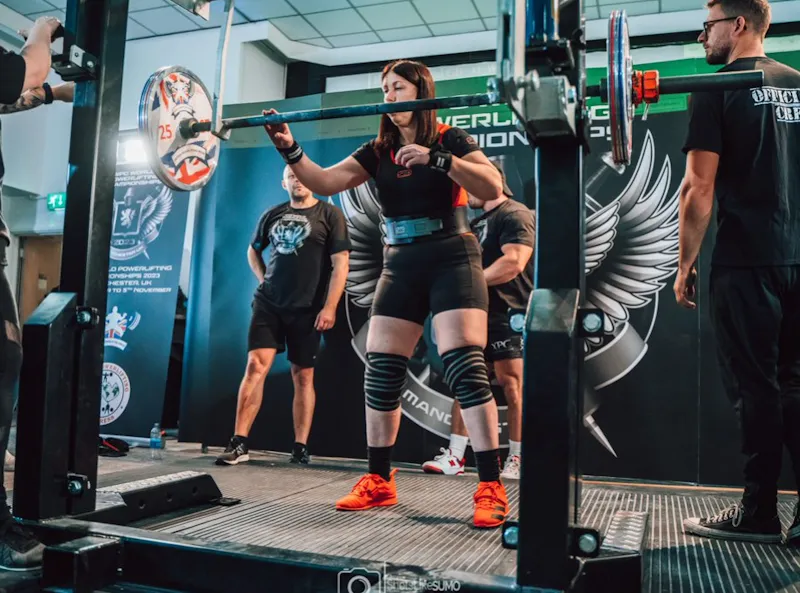
Powerlifting: A Primer for Beginners
Powerlifting is a competitive strength sport focusing on three primary compound movements: the squat, bench press, and deadlift. It is a test of overall strength, as participants aim to lift as much weight as possible for a single repetition in each lift. Powerlifters train to increase their strength in these specific lifts to achieve the highest total weight lifted. Powerlifting requires a combination of strength, technique, and mental focus. It is a sport that attracts individuals dedicated to pushing their limits and constantly striving for improvement.
The Fundamentals of Powerlifting
Powerlifting is a sport that revolves around meets, where lifters compete to achieve the highest total weight lifted in the squat, bench press, and deadlift. Each lifter is given three attempts to perform each lift, and the highest successful lift in each category is combined to calculate their total. The lifter with the highest total in their weight class is declared the winner. Meets are typically all-day events, with lifters competing in different weight classes and divisions based on age group, weight class, and experience level. The sport requires a combination of strength, technique, and mental focus, as lifters strive to lift the heaviest weights possible for a single repetition in each lift.
Comparing Powerlifting with Other Strength Sports
Powerlifting is often compared to other strength sports, such as weightlifting and bodybuilding. While all three sports involve lifting weights, their focus and goals differ. Powerlifting primarily focuses on strength and power, with lifters aiming to lift the heaviest weights possible in the squat, bench press, and deadlift. On the other hand, weightlifting is focused on explosive movements, such as the snatch and clean and jerk, which require speed, agility, and technique. On the other hand, bodybuilding focuses on building muscle mass and aesthetics, with competitors striving for a symmetrical and well-defined physique. Each sport has its training methods, techniques, and equipment, depending on individual fitness goals and preferences.
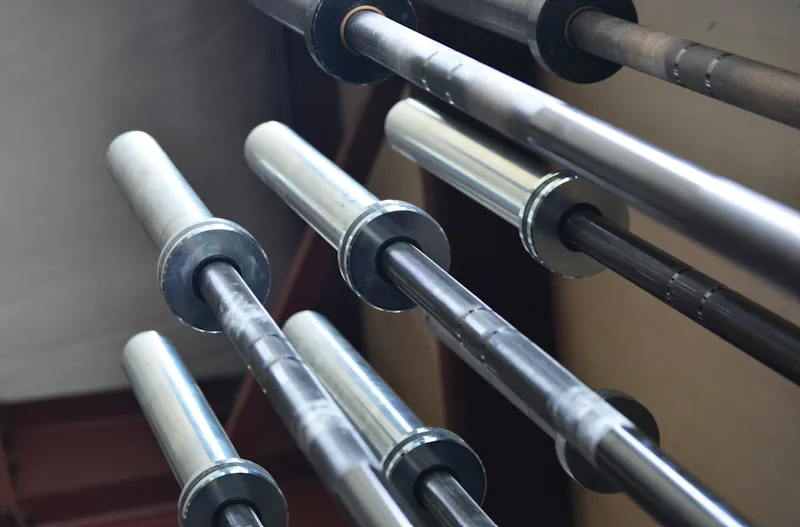
Essential Powerlifting Gear For Beginners
Regarding powerlifting, having the right gear can significantly affect your performance and safety. While it's not necessary to have all the latest equipment, there are a few essential items that every beginner powerlifter should consider. These include wrist wraps, knee sleeves, a lifting belt, and supportive equipment like a squat rack and bench. Wrist wraps, made with sturdy elastic material, can provide stability and support to the wrists during heavy lifts, while knee sleeves can help protect the knees and provide extra support. A lifting belt can provide additional support for the core and lower back, helping to maintain proper form and prevent injury. Supportive equipment like a squat rack and bench can provide a safe and stable platform for performing the squat, bench press, and other exercises. Investing in the right gear can enhance your performance and reduce the risk of injury while powerlifting.
Selecting the Right Barbell
The barbell is the centrepiece of any powerlifting training program, and selecting the right one is crucial for optimal performance. A good barbell should be well-balanced, durable, and able to handle heavy loads. Look for a barbell with high-quality knurling, which provides a firm grip and prevents the bar from slipping during lifts. The knurling should be neither aggressive nor smooth, striking a balance between grip and comfort. Additionally, consider the length and diameter of the barbell, as these factors can affect your lifting technique and comfort. Powerlifting bars are typically 7.2 feet long and weigh 45 pounds, but variations in length and weight can accommodate different training preferences. Whether you're training at home or in a commercial gym, investing in a high-quality barbell will make a significant difference in your powerlifting journey.
Importance of Weight Plates and How to Choose Them
Weight plates are essential to any powerlifting setup, as they determine the resistance you'll be lifting. There are two main types of weight plates: bumper plates and iron plates. Bumper plates are typically made of rubber and are designed to be dropped from overhead without causing damage to the floor or the plates themselves. They are commonly used in Olympic weightlifting and are color-coded to indicate the weight. Iron plates, conversely, are made of cast iron and are more durable but can be noisier when dropped. When selecting weight plates, consider the weight class you'll be competing in and the weight increments you'll need for progression. It's also important to ensure that the weight plates are compatible with your barbell and securely fastened to prevent any accidents during lifting.
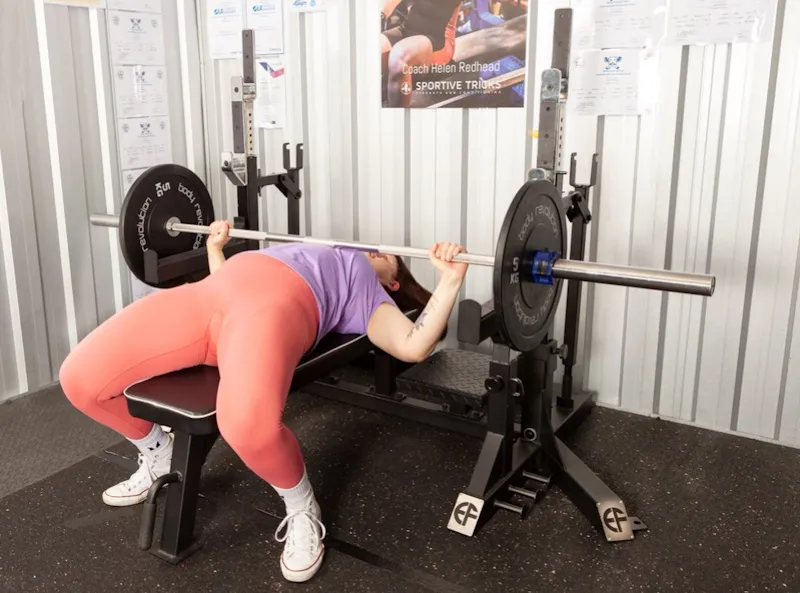
Setting Up Your Training Space
Creating a dedicated training space, whether it's in your garage or a spare room, can make a significant difference in your powerlifting journey. Having a designated area for your workouts provides convenience and eliminates the need to travel to a gym. When setting up your training space, consider the equipment you'll need, such as a squat rack, bench, barbell, and weight plates. Make sure the space is well-ventilated and has enough room for you to move freely during your workouts. A clean and organized training space will help you stay focused and motivated to achieve your powerlifting goals.
Choosing a Squat Rack: Features to Look For
A squat rack is an essential piece of equipment for powerlifting, as it provides a safe and stable platform for performing squats and other exercises. When choosing a squat rack for your home gym, there are several features to consider. First and foremost, safety should be a top priority. Look for a squat rack with adjustable safety bars or spotter arms that can catch the barbell in case of failure or fatigue during a lift. The rack should also have a sturdy and stable frame that can support heavy weights without wobbling or tipping over. Additionally, consider the height and width of the rack to ensure it fits in your training space and can accommodate your height and lifting technique. By choosing a squat rack with the right features, you can perform squats safely and effectively, helping you progress in your powerlifting journey.
Picking the Perfect Bench for Bench Press
A sturdy and stable bench is essential for performing the bench press, one of the main lifts in powerlifting. When choosing a bench for your home gym, several factors must be considered. First, the bench should be adjustable, allowing you to set it at different incline angles to target different muscle groups and vary your training. Look for a bench with a wide and padded surface for optimal comfort during your workouts. Stability is key, so ensure the bench has a sturdy frame and doesn't wobble or move during heavy lifts. Additionally, consider the bench's weight capacity to ensure it can support your body weight and the weight of the barbell. Choosing the perfect bench for bench press allows you to perform the lift safely and effectively, helping you build strength and progress in your powerlifting journey.
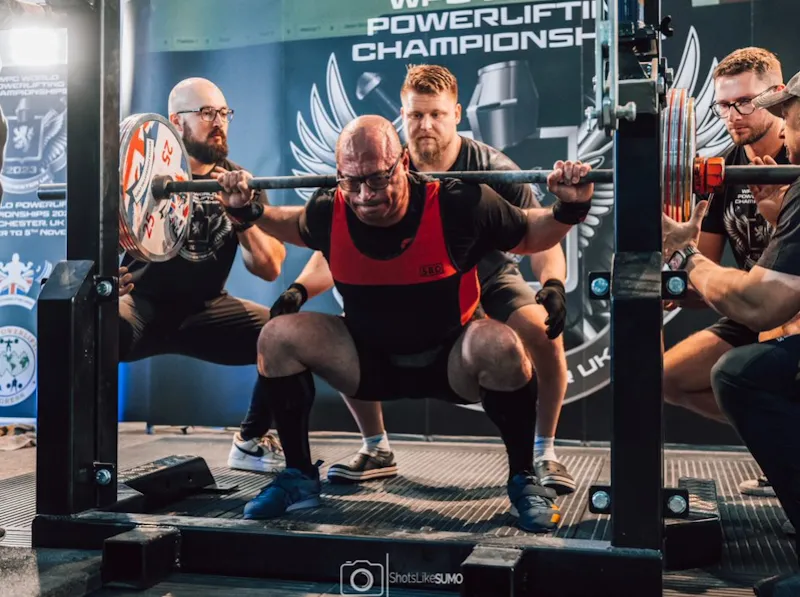
The Beginner's Guide to Powerlifting Equipment
Powerlifting equipment can be crucial to your performance and safety during training sessions and competitions. As a beginner, it's important to understand the different types of equipment available and choose the ones that best suit your training style and goals. While some equipment, such as weightlifting shoes and knee sleeves, can provide significant benefits, others may be more personal preference. It's essential to prioritize safety and technique in your training and gradually introduce supportive equipment as you become more experienced and comfortable with the main lifts. By understanding the role and benefits of different powerlifting equipment, you can avoid falling for gimmicks and make informed decisions that support your progress and help you reach your powerlifting goals.
Step 1: Acquiring the Basic Gear
When starting your powerlifting journey, acquiring the basic gear that will support you in your training is important. The first essential gear items to consider are lifting shoes, lifting belts, and wrist wraps. Lifting shoes provide stability and an elevated heel that can improve squat form and performance. A lifting belt can support the core and lower back during heavy lifts. Wrist wraps and other equipment, such as sleeves and belts, offer stability and support to the wrist joints during bench presses and other lifts. These gear items can enhance your performance and safety as you progress in your powerlifting training. Choosing high-quality gear that fits and meets your specific needs is important. By acquiring the basic gear, you'll be well-equipped to start your powerlifting journey on the right foot.
Step 2: Understanding Each Piece of Equipment's Role
Once you have acquired the basic gear for powerlifting, it's important to understand each piece of equipment's role and how it can benefit your training. Knee sleeves, for example, can provide compression and support to the knees, helping to protect them during heavy lifts and reducing the risk of injury. They can also help to improve blood flow and alleviate discomfort, making them a great tool for powerlifters. Deadlift and squat, on the other hand, are two main lifts in powerlifting. The deadlift focuses on the posterior chain muscles, including the hamstrings and glutes, while the squat targets the quadriceps, hamstrings, and glutes, along with the core and back muscles. By understanding the role of each piece of equipment and how it relates to the main lifts, you can optimize your training and improve your performance in powerlifting.
Step 3: Learning to Use Your Gear Safely and Effectively
Once you have acquired the necessary powerlifting gear, learning how to use it safely and effectively is important. Using gear incorrectly can increase the risk of injury and hinder your progress. Understanding the proper technique for each lift and how the gear should be used in conjunction with that technique is crucial. For example, using a lifting belt incorrectly can lead to reliance on the belt for stability instead of engaging your core muscles. Similarly, using wrist wraps incorrectly can restrict mobility and hinder proper technique. Take the time to learn how to use your gear properly and seek guidance from experienced lifters or trainers. Using your gear safely and effectively can maximize its benefits and minimize the risk of injury during heavy lifting sessions.
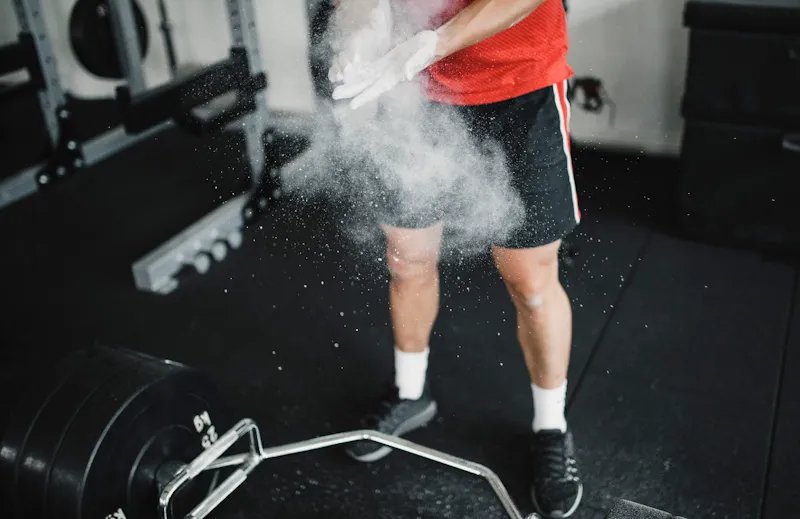
Enhancing Performance with Supportive Gear
In addition to the basic powerlifting gear, other supportive equipment options can enhance your performance and help you reach your training goals. These include lifting straps, chalk, and supportive clothing like leggings and compression gear. Lifting straps can improve grip strength and allow you to lift heavier weights, while chalk can enhance your grip on the barbell. Supportive clothing, such as leggings and compression gear, can support muscles and joints, improve blood flow, and aid in recovery. The decision to use supportive gear ultimately depends on your training goals and personal preferences. Experiment with different options and determine what works best for you regarding performance enhancement and comfort.
The Role of Lifting Belts in Powerlifting
Lifting belts are a common piece of gear used in powerlifting to provide additional support and stability during heavy lifts. A lifting belt, specifically a quality lever belt, can help maintain proper form, increase intra-abdominal pressure, and support the lower back and core. By wearing a lever belt, you can enhance your core stability and reduce the risk of injury during heavy lifts. It's important to note that a lever belt should not be relied upon as a substitute for proper technique and core strength. It should be used with a solid foundation of core stability and proper lifting mechanics. When choosing a lever belt, look for one that is sturdy, adjustable, and fits snugly around your waist. Incorporating a lever belt into your powerlifting training can optimize your performance and safety during heavy lifts.
To Chalk or Not to Chalk?
Chalk is a commonly used accessory in powerlifting to improve grip strength and enhance performance. It helps reduce hand moisture and friction, allowing for a more secure grip on the barbell. Chalk is particularly beneficial during heavy deadlifts, where maintaining a secure grip is crucial. It can also be used during other lifts, such as the squat and bench press, to improve grip and prevent the barbell from slipping. When using chalk, it's important to apply it sparingly to avoid excessive build-up on the equipment. Additionally, check the rules and regulations of your training facility or competition to ensure that chalk is allowed. Using chalk effectively improves your grip and confidence during heavy lifts, ultimately enhancing your powerlifting performance.

Training Tips for Powerlifting Beginners
Starting a powerlifting journey can be both exciting and challenging. To set yourself up for success, it's important to establish a well-rounded training routine that aligns with your goals and abilities. Consistency is key, so aim to train regularly and gradually increase the intensity and volume of your workouts over time. Focus on proper technique and form to ensure safe and effective lifting for all fitness levels. It's also important to track your progress and adjust your training routine. By following these training tips, beginners can lay a solid foundation and progress in their powerlifting journey.
Developing a Training Routine That Works for You
Developing a training routine that works for you is crucial for success in powerlifting. As a beginner, it's important to start slowly and gradually increase your workouts' intensity and volume. Aim to train regularly, incorporating exercises that target the main lifts and accessory movements that support overall strength and muscle development. Set specific goals for each training session and track your progress over time. It's also important to listen to your body and allow for adequate rest and recovery. As you become more experienced, consider working with a coach or experienced lifter to fine-tune your training routine and technique. By developing a training routine aligning with your goals and abilities, you can progress steadily and achieve your powerlifting goals.
Techniques for the Big Three Lifts
Mastering the technique for the big three lifts - the squat, bench press, and deadlift - is crucial for success in powerlifting. Each lift requires specific skills and techniques to perform effectively and safely. When performing the squat, focus on maintaining an upright torso, driving through the heels, and squatting to a depth where your hips are below your knees. For the bench press, ensure your feet are planted firmly on the ground and maintain a slight arch in your lower back. When performing the deadlift, engage your lats, maintain a neutral spine, and drive through your heels to lift the weight. It's important to start with lighter weights and gradually increase the load as you become more comfortable with the technique. By mastering the technique for the big three lifts, you can optimize your performance and reduce the risk of injury in powerlifting. The last thing you want to do is spin your wheels and make no progress.
Conclusion
In conclusion, choosing the best powerlifting gear as a beginner is crucial for your journey into this strength sport. Understanding the fundamentals, selecting the right equipment, and setting up your training space are vital steps. Acquiring essential gear, learning its role, and using it safely enhance your performance. Developing a tailored training routine and mastering techniques for the big lifts are key for progress. Remember, safety and effectiveness should always be prioritized in your powerlifting journey. Stay informed, stay focused, and enjoy the journey to becoming a stronger version of yourself.
Frequently Asked Questions
What’s the Best Powerlifting Routine for a Beginner?
The best powerlifting routine for a beginner depends on individual goals, experience level, and training frequency. It's important to start with a balanced program that focuses on the main lifts, incorporates accessory exercises, and allows for adequate rest and recovery.
What essential powerlifting gear do beginners need to start their training?
To start powerlifting training, beginners need essential gear, such as a quality barbell for lifts and weight plates for resistance. A sturdy squat rack and bench are also crucial. Basic gear, including shoes, attire, and supportive accessories like lifting belts, can enhance performance.
What factors should beginners consider when selecting powerlifting gear?
When choosing powerlifting gear, beginners should consider factors like fit, quality, and safety. Ensure proper sizing for comfort and performance, opt for durable materials, and prioritize equipment that enhances your form to prevent injuries.
Are there specific brands or products recommended for beginners in powerlifting?
Specific brands like Rogue Fitness and products such as Adidas Powerlift shoes are popular among beginners in powerlifting for their quality and performance. These brands offer a range of gear tailored to beginners to enhance their training experience.
How can the right powerlifting gear enhance a beginner's performance and safety during training sessions?
Selecting the correct powerlifting gear is crucial for beginners to improve performance and ensure safety during training. From barbells to weight plates, each piece plays a vital role. Understanding the equipment's function and proper usage is key for a productive powerlifting journey.